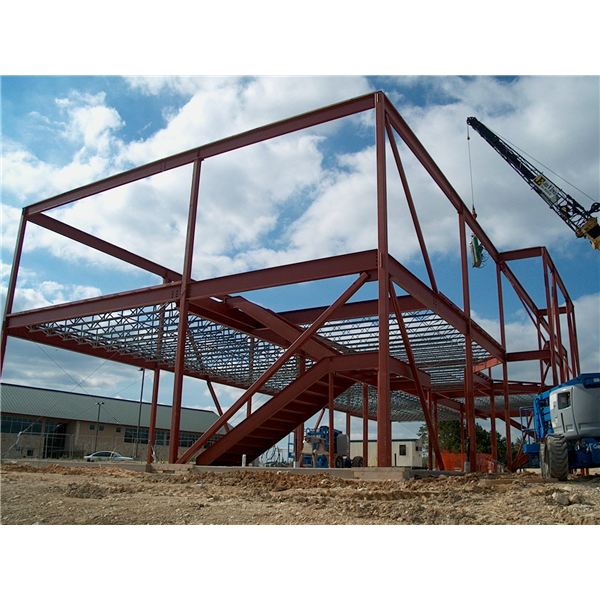In an era where flexibility, sustainability, and cost-efficiency are paramount, modular houses have emerged as one of the most innovative solutions for remote living. Among the many manufacturers making waves in the modular housing industry, Omiga, a leading steel structure construction company, stands at the forefront of this revolution. With its cutting-edge steel construction techniques, Omiga offers a vision for future living that blends modernity, durability, and convenience.
What Are Modular Houses?
Modular houses are prefabricated structures that are built off-site in controlled factory environments. Once completed, these modular units are transported to their designated location and assembled on-site. This process stands in stark contrast to traditional construction, where everything is built on-site, requiring more time, labor, and resources.
The modular approach to housing is gaining popularity, especially in remote or hard-to-reach areas, due to its numerous advantages, from cost-effectiveness to speed of construction. But it is the steel structure construction technology, as pioneered by Omiga, that truly elevates modular housing to the next level.
Key Benefits of Modular Houses in Remote Locations
1. Efficiency in Construction Time
One of the most significant advantages of modular housing is the dramatically reduced construction time. Traditional home construction can take months or even years, especially when dealing with remote locations that may require additional infrastructure. Modular homes, by contrast, can be prefabricated in factories while site preparation is happening simultaneously. This parallel process means that the assembly of the house on-site can take just a few days.
Omiga's steel structure construction ensures that even the most complex modular homes can be assembled quickly and safely. The precision of steel construction minimizes the chances of errors during assembly, allowing for faster turnarounds, especially crucial in remote locations where time is often of the essence.
2. Durability and Sustainability
When building in remote areas, where the local climate can be harsh and unpredictable, the durability of materials used in construction is paramount. Steel, as used in Omiga's modular homes, is highly resistant to the elements—whether it’s extreme temperatures, heavy rain, or strong winds. Steel structures provide unparalleled strength and longevity, making them an ideal choice for remote locations that may experience challenging weather conditions.
Furthermore, Omiga integrates sustainable practices into its modular homes, ensuring that they meet eco-friendly standards. The steel used in construction is not only recyclable but also has a low environmental impact during production compared to traditional building materials like concrete or wood.
3. Flexibility and Adaptability
Remote living often requires flexibility in terms of space and design. Modular homes are highly customizable, with different configurations and layouts to suit various needs. Whether it’s a small, compact unit for one or two people or a larger, multi-room house for a family or team, modular homes can be tailored to fit any requirement.
Omiga’s modular steel homes also allow for easy expansion. As needs grow, additional units can be added to create a larger living space without the need for extensive reconstruction. This scalability is a key feature that makes modular houses perfect for dynamic, evolving remote living conditions.

4. Cost Efficiency
Building in remote locations often means dealing with higher transportation costs, labor shortages, and the need for specialized equipment. Modular houses offer a cost-effective solution by minimizing these challenges. With off-site construction, labor costs are reduced, and the streamlined manufacturing process helps to keep the overall cost of building down.
Omiga’s steel modular units are designed with affordability in mind, ensuring that the cost of materials, manufacturing, and assembly remains low while maintaining high-quality standards. This cost-efficiency makes modular homes an attractive choice for remote living in both developing and developed areas.
5. Energy Efficiency
In remote locations where access to utilities such as electricity, water, and gas can be limited, energy efficiency becomes a top priority. Modular homes from Omiga are built with modern insulation techniques, ensuring that they maintain comfortable temperatures year-round. The steel structure of the home, combined with energy-efficient materials, minimizes heat loss during winter and keeps the interior cool during summer months.
Omiga also designs its homes with renewable energy options in mind, including the integration of solar panels, wind turbines, or other green technologies. This reduces dependence on external energy sources, making modular homes an excellent choice for off-grid living.
6. Transportation and Mobility
Another defining characteristic of modular houses is their portability. Because these homes are prefabricated and designed to be transportable, they can be easily relocated if necessary. This is particularly beneficial for remote living situations where the environment may change or the residents may need to relocate due to work or other factors.
Omiga's steel construction ensures that these homes remain sturdy during transportation, regardless of distance or terrain. Modular homes are delivered on trucks or even by air, making them a versatile and mobile option for remote housing needs.
7. Minimal Environmental Disruption
Building in remote areas often means navigating sensitive ecosystems and minimizing the environmental impact of construction. Traditional building methods can lead to significant soil disruption, vegetation removal, and habitat destruction. With modular housing, the environmental footprint is greatly reduced. Since the construction happens off-site, there’s less machinery on the ground and minimal disruption to the surrounding environment.
Omiga's steel modular homes are engineered to minimize waste during the construction process. Additionally, the company emphasizes the use of locally sourced materials when possible, reducing the carbon footprint of transportation.
Modular homes, particularly those constructed using Omiga's innovative steel structure approach, offer a range of benefits for remote living. With rapid construction times, durability, cost-effectiveness, and sustainability, these homes provide a forward-thinking solution to the challenges of remote housing.
Whether it’s for off-grid living, remote workers, or communities in underserved areas, modular homes are paving the way for the future of housing in even the most challenging environments.

